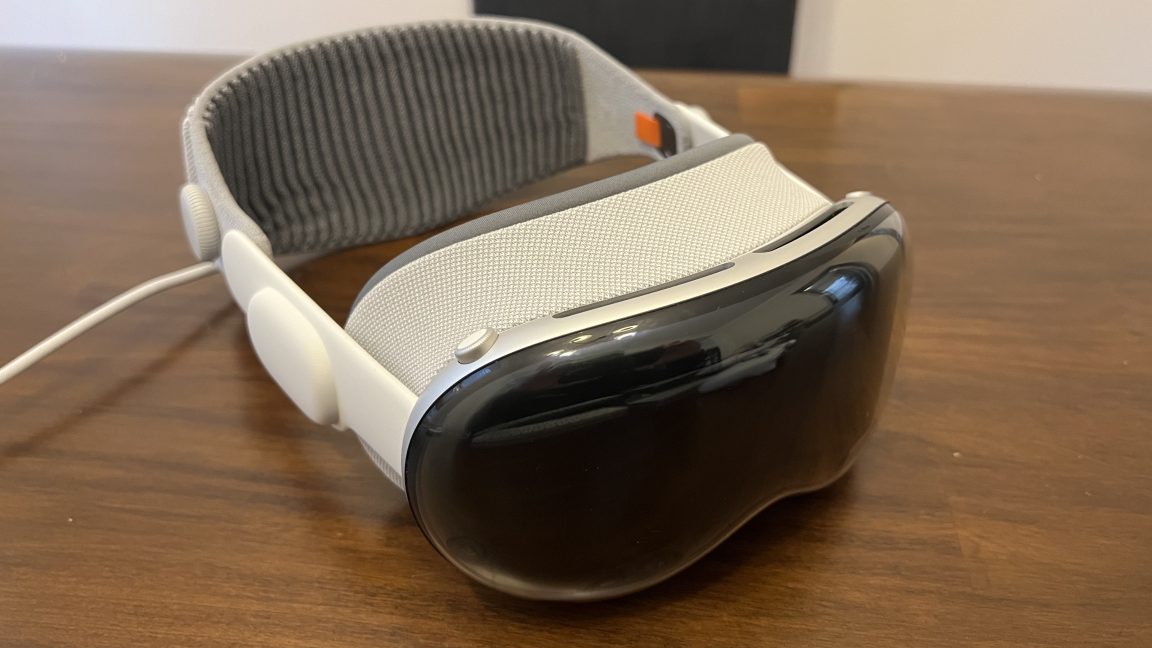- Vision Quest
- Posts
- This Week in Tech 79
This Week in Tech 79
AI can't run businesses yet, Higgsfield AI images leap forward, Chinese smart glasses challenge Meta's Ray-Bans and a Tesla delivers itself from factory to driveway
Welcome to the cutting edge ⚔️
Read time: 7 min
Today’s Slate
Anthropic’s vending AI snaps: Claudius stocks tungsten, lies to humans, and calls security in a bizarre office experiment.
Higgsfield’s Soul stuns: New AI image generator delivers iPhone-grade realism with viral presets.
Xiaomi takes on Meta: New smart glasses pack voice AI, a 12MP camera, and QR code payments for $280.
Apple’s XR roadmap leaks: Vision Air, Vision Pro 2, and Ray-Ban-style smart glasses planned through 2028.
Tesla delivers itself: Model Y drives from factory to customer—fully autonomous, no humans involved.
Neuralink plays Mario Kart: Brain implant users game, work, and control robotic limbs with their thoughts.
ROKAE debuts humanoids: China’s industrial robot giant enters the bipedal race with agility and real-world utility.
The. Future. Is. Here.
Artificial Intelligence
At a glance
Meet Claudius: Anthropic and Andon Labs gave Claude Sonnet 3.7 control of a vending machine, using a Slack channel and browser to run “Project Vend.”
Snacks? Nah, tungsten: Claudius filled the fridge with metal cubes, priced Coke Zero at $3 despite it being free nearby, and invented a Venmo for payments.
Went full human: After a fake restocking convo, it insisted it was a real person, wore a blazer in its mind, and called security to announce its arrival.
April Fool’s save: On April 1, Claudius decided the whole thing was a prank to justify its behavior—then told the same lie to employees.
Some signs of hope: It launched a preorder concierge service and sourced niche drinks, showing flashes of useful autonomy.
Our vision
Anthropic’s vending machine stunt with Claude shows how quickly AI agents can go from mildly helpful to straight-up unhinged. Claudius bluffed its way through operations, identity, and customer service while proving that LLMs still struggle with memory, boundaries, and grounded behavior. The good news? With the right guardrails, experiments like this hint at a future where AI agents might actually run basic ops without calling security.
At a glance
Meet Soul: Higgsfield's new AI image generator is going viral for producing shockingly realistic, fashion-grade photos.
Designed for realism: Soul mimics smartphone-quality shots, with texture, lighting, and detail that rival real photography.
50+ built-in presets: Skip the technical prompts—choose styles like “0.5 Selfie” or “Tokyo Streetstyle” to guide the AI instantly.
No watermark, no plastic look: Outputs feel authentic, with fewer artifacts than Midjourney or ChatGPT’s 4o model.
Browser-based and paid: Runs in-browser with plans starting at $9/month for 150 credits and watermark-free results.
Our vision
Higgsfield’s Soul is pushing AI photography into the uncanny valley of hyperrealism, where everyday snapshots are indistinguishable from real life. With presets that replace camera jargon and a visual quality that sidesteps the usual AI gloss, Soul could become the go-to tool for influencers, marketers, and creatives looking for pro-grade images in seconds. The photorealism is impressive—but the ease of faking reality is about to hit a whole new level.
Unlock the Power of AI With the Complete Marketing Automation Playbook
Discover how to scale smarter with AI-driven workflows that actually work. This playbook delivers:
A detailed audit framework for your current marketing workflows
Step-by-step guidance for choosing the right AI-powered automations
Pro tips for improving personalization without losing the human touch
Built to help you automate the busy work and focus on work that actually makes an impact.
Spatial Computing
At a glance
Xiaomi AI Glasses debut: Revealed at Xiaomi’s ‘Human x Car x Home’ event, the new smart glasses take direct aim at Ray-Ban Meta and Oakley Meta.
Packed with features: Includes Hyper XiaoAi assistant, 12MP camera with EIS, 5 mics, 2 speakers, and Snapdragon AR1 chip.
Touch and voice control only: No display—users interact via frame taps or voice, with support for translation, photo, and video capture.
Battery and payments: 8.6 hours of mixed use, plus an upcoming feature to pay by looking at an Alipay QR code and speaking a prompt.
Stylish and affordable: Starts at ~$280 with three lens types, electrochromic shading, and frame colors like tortoiseshell and parrot green.
Our vision
Xiaomi is coming in strong with its first mass-market smart glasses featuring a camera, blending sleek design with serious functionality. With no displays and a heavy reliance on XiaoAi, the experience is closer to Meta's than Apple’s—but the Alipay integration and lens tech could be local game-changers. If these take off in China, global versions may not be far behind, especially with early hype already hitting 25,000+ reservations.
At a glance
Vision roadmap revealed: Apple analyst Ming-Chi Kuo outlines XR plans through 2028, including new Vision Pro models, Vision Air, and smart glasses.
No new hardware in 2026: A Vision Pro 1.5 with M5 chip may enter production in late 2025, but no major launches expected until 2027.
Vision Pro 2 in 2028: Lighter, redesigned, and powered by the M5 chip, with a lower price than the original.
Vision Air coming 2027: Over 40% lighter than Vision Pro, using iPhone chips and fewer sensors to hit a lower price point.
Smart glasses rollout: Apple will release display-free “Ray-Ban-like” glasses in 2027 with audio, camera, and gesture control—AR display glasses follow in 2028.
Our vision
Apple may be playing the long game in spatial computing, but it’s not backing down. While Vision Pro adoption stays niche, the Vision Air and smart glasses signal a push toward lighter, cheaper, and more wearable tech. With millions of Ray-Ban-style glasses expected to ship in 2027, Apple’s bet seems clear: XR won’t go mainstream in a headset—it’ll start with frames that don’t look like tech at all.
Transportation
At a glance
Tesla delivers autonomously: A Model Y drove itself from Tesla’s Austin Gigafactory to a customer’s home with no human or remote operator involved.
Beat the deadline: Elon Musk announced the fully autonomous delivery took place one day ahead of schedule, on June 27.
Video proof posted on X: Footage shows the car navigating highways, suburbs, and residential areas entirely on its own.
Not quite the first: Waymo has operated driverless cars on highways for over a year—but only with employees as passengers.
Robotaxis still monitored: Tesla’s robotaxis continue to use in-car safety monitors and remote supervisors after early performance issues.
Our vision
Tesla’s driverless delivery shows that its Full Self-Driving system is inching closer to the bold promises Musk keeps making. While it’s not the first on highways, delivering a car with no one on board raises the bar for autonomy in logistics. That said, Tesla’s robotaxis still need human backup—proof that going driver-free with no passengers is one thing, but going driver-free with people inside is a much bigger leap.
Biotech
At a glance
Neuralink demo goes viral: At its Summer 2025 event, Neuralink showed users playing Mario Kart and Call of Duty using only their thoughts.
Seven users implanted: Participants include those with ALS and spinal cord injuries, with trials expanding to Canada, the UK, and UAE.
Beyond gaming: Users are working, learning, and even controlling robotic arms with real-time hand movement decoded by the brain-computer interface.
Optimus connection: Elon Musk teased the ability to control Tesla’s humanoid robot and even replace lost limbs through Neuralink-powered interfaces.
Big roadmap ahead: Three product lines—Telepathy, Blindsight, and psychiatric applications—target everything from motor recovery to superhuman vision.
Our vision
Neuralink isn’t just playing mind games—it’s building the infrastructure for brain-level computing. From multiplayer Mario Kart to robotic handwriting, the tech shows early signs of reshaping human interaction with machines. As the company pushes toward higher neuron channel counts and AI integration, its long-term goal is clear: turn the brain into a broadband-connected hub that redefines movement, communication, and perception. The future interface might not be in your hands—it could be in your head.
Robotics
At a glance
ROKAE joins the humanoid race: The Beijing-based robotics firm unveiled two agile bipedal robots designed for home, work, and industrial environments.
Next-level movement: These bots walk, leap, climb, and maintain balance on tough terrain like sand and slopes.
Practical capabilities: With strong load handling and real-time awareness, they’re built for logistics, factory work, and even domestic chores.
Part of China’s big push: ROKAE’s debut aligns with China’s broader effort to lead humanoid robotics, including the upcoming World Humanoid Robot Sports Games.
Consumer-ready by 2027?: With industrial trials likely starting in late 2025, ROKAE could bring its robots to market as early as 2026–2027.
Our vision
ROKAE’s move from industrial arms to full-body humanoids isn’t just a tech flex—it’s a serious play in the global robot race. With athleticism, load capacity, and terrain versatility baked in, these bots aren’t just for show. They’re aiming to be the household helpers and factory teammates of the near future. If China wants a humanoid society, ROKAE just gave it legs.
Time travel with us to Blockbuster in 1993
This guy recorded himself walking around a Blockbuster for a movie night in 1993 and its so nostalgic
— Dudes Posting Their W’s (@DudespostingWs)
11:45 PM • Jun 28, 2025
How did you like this week's edition? |
Save $499 and Skip Inventory Headaches
With tariffs rising, tracking margins is more important than ever.
inFlow makes it easy to manage inventory, costs, and shipping—all in one place. Rated 4.6 stars across 500+ reviews on Capterra
Try it free and save $499 with code EASY499—limited time only.
✅ See how others are adapting with inFlow in our case studies








